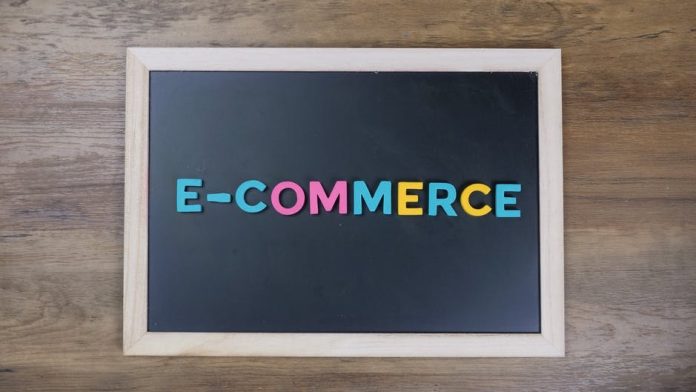Key Takeaways:
- Professional e-commerce design is critical for maximizing online store performance.
- A user-friendly interface and sleek design can significantly enhance customer experience and drive sales.
- Incorporating SEO, mobile optimization, and security features is essential for success.
- Staying abreast of the latest e-commerce design trends is crucial to remaining competitive.
Table of Contents
The Importance of Professional E-commerce Website Design
The e-commerce landscape is fiercely competitive and continuously evolving. A well-designed website aims to create an experience that balances performance, aesthetics, and functionality rather than just looking polished. The right design can instill trust, foster loyalty, and drive users to take action, turning visitors into customers. The effectiveness of your online store hinges on the ability to deliver a user experience that resonates with the target audience and outperforms competitors.
Elements of a User-Friendly E-commerce Website
User-friendly ecommerce website design is the backbone of a high-converting e-commerce website. This focuses on an intuitive navigation system that helps users find products quickly, has clear and concise product descriptions, and has seamless checkout processes. High-quality images, responsive customer service sections, and clear calls-to-action (CTAs) enhance user journeys. Considering the customer’s time and comfort throughout their visit will ensure they stay longer and are more likely to make a purchase.
Designing for Conversion: Best Practices to Follow
The goal of ecommerce website design isn’t just to impress viewers and convert them into paying customers. The design should lead consumers naturally from the landing page to purchasing with clarity. To achieve this, optimize landing pages, simplify the checkout process, provide transparent pricing and shipping information, and strategically place reviews and testimonials to influence buying decisions positively.
Mobile Optimization: A Non-Negotiable in E-commerce Design
With increasing consumers shopping via mobile devices, a mobile-optimized design is indispensable. This covers mobile-responsive layouts, quick-loading webpages, and touch-friendly interfaces. Regardless of how they access your store, customers can easily navigate and finish purchases if you create a consistent shopping experience across all devices. This practice is in line with consumer behavior and improves your search engine rankings because algorithms such as Google’s take mobile-friendliness into account.
Integrating SEO into Your E-commerce Design Strategy
A stunning design won’t matter if potential customers can’t find your online store. Search Engine Optimization (SEO) should be woven into the fabric of your e-commerce design strategy from the beginning. This includes using the right keywords, optimizing images, ensuring fast loading speeds, and creating a logical site structure that search engines can easily crawl. SEO is a cornerstone of a robust online presence and, when executed in tandem with professional design, can significantly increase your site’s visibility and traffic.
Security Measures in E-commerce Website Design
As the frequency of online transactions grows, so does the concern for cybersecurity. It’s imperative to integrate robust security measures into your e-commerce website. Secure Socket Layer (SSL) certificates, two-factor authentication, firewalls, and regular security audits safeguard sensitive customer data and engender trust. Customers are likelier to do business with sites that demonstrate a commitment to security.
Employing Advanced Technologies for Enhanced Shopping Experiences
The integration of advanced technologies such as augmented reality (AR), virtual reality (VR), and artificial intelligence (AI) can set your store apart. These innovations allow customers to visualize products in their own space with AR, enjoy immersive experiences with VR, or receive personalized recommendations and support through AI-powered tools. By staying ahead of technological trends and incorporating them into your design, you can offer unique and captivating shopping experiences.
The Impact of Visual Aesthetics on Online Store Success
Visuals first attract customers and retain their interest. A cohesive color scheme, consistent typography, and a clear visual hierarchy reflect your brand’s identity and effortlessly guide users through the website. High-quality product photos and videos accurately represent what you’re selling, reinforce customer confidence, and reduce the uncertainty inhibiting online purchases.
Navigating User Experience (UX) in E-commerce Design
The user experience encompasses every customer interaction with your e-commerce website, from browsing to checkout. A cheerful UX design is human-centered, aiming to fulfill the user’s needs and provide a pleasant and efficient shopping experience. Taking a proactive approach to UX involves understanding the user’s perspective, conducting usability testing, and refining the design to ensure the shopping journey is smooth and enjoyable.
Analytics and Feedback: Iterating for Design Perfection
The measure of a successful e-commerce website design is how well it performs in practice. Analytics provide quantitative data to make informed decisions, while customer feedback offers qualitative insights. Combining these information sources allows for continuous improvement and iteration of the website design. Regularly analyzing customer behavior, identifying patterns, and adjusting the design can increase user satisfaction, sales, and loyalty.

